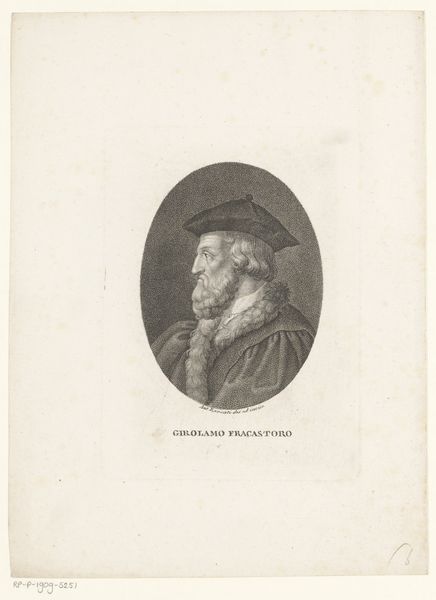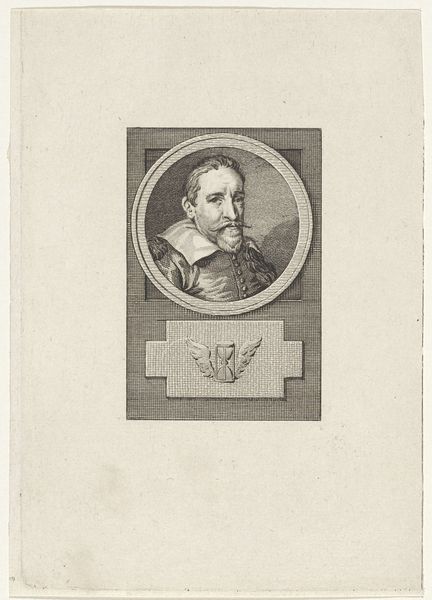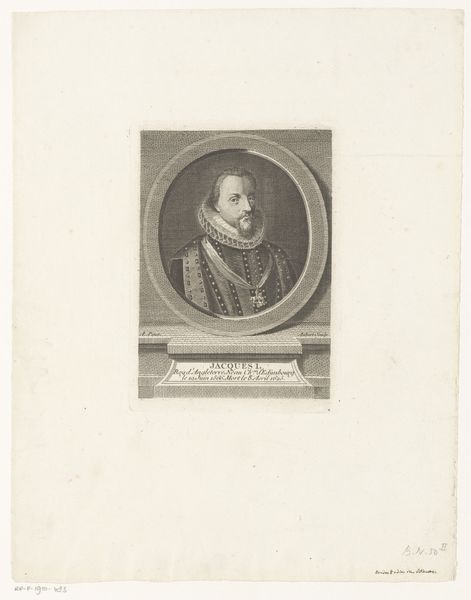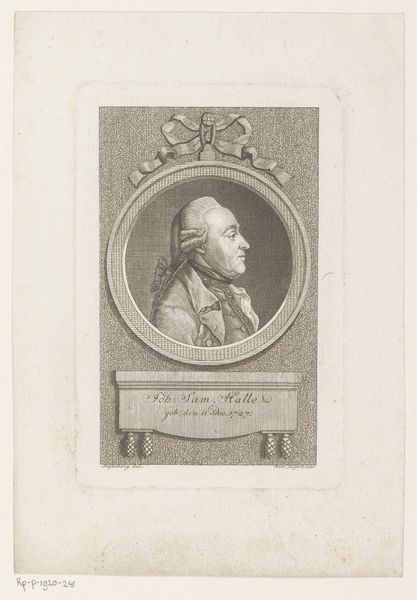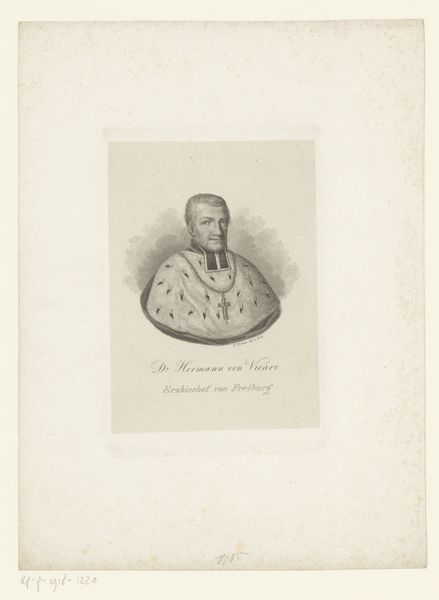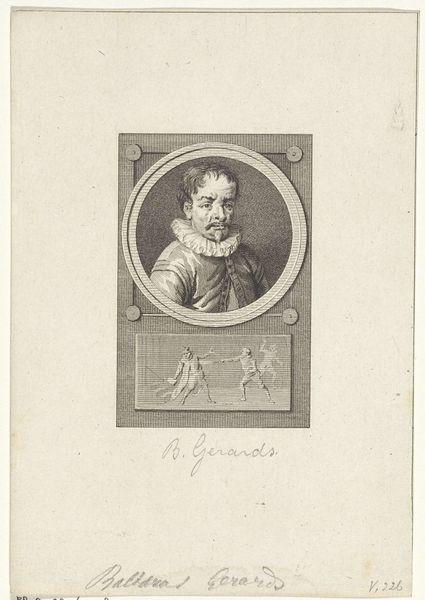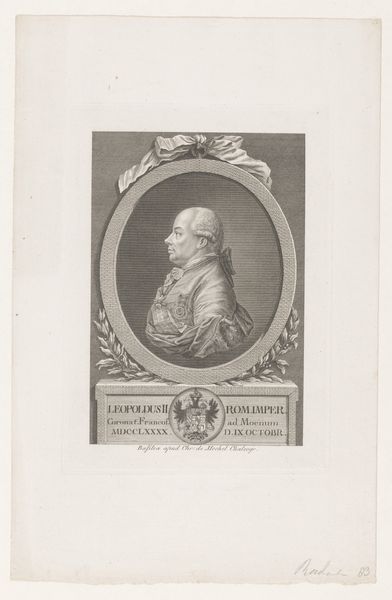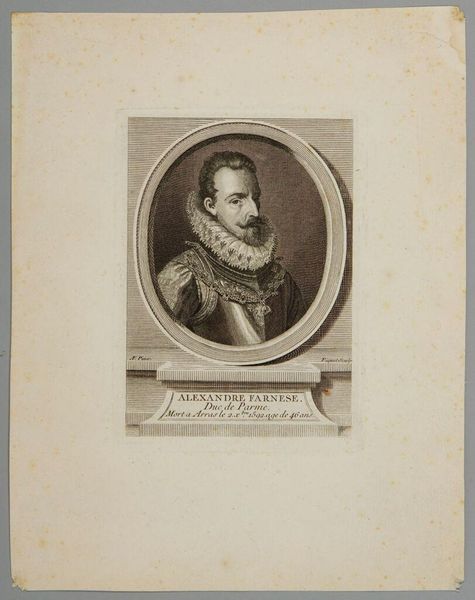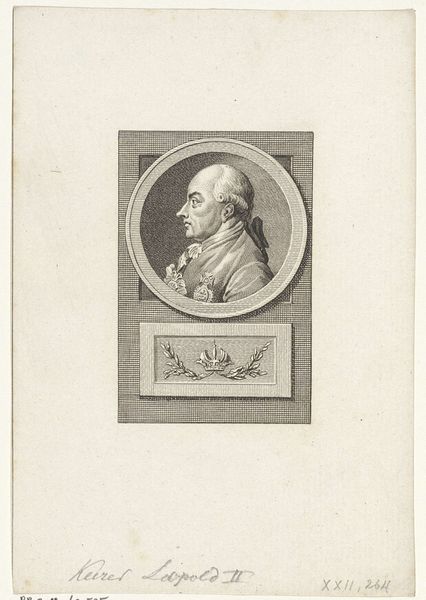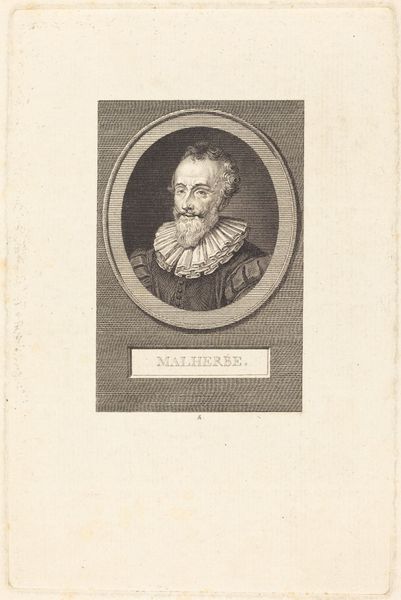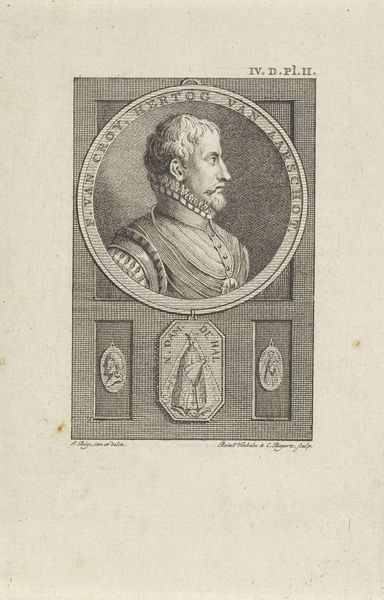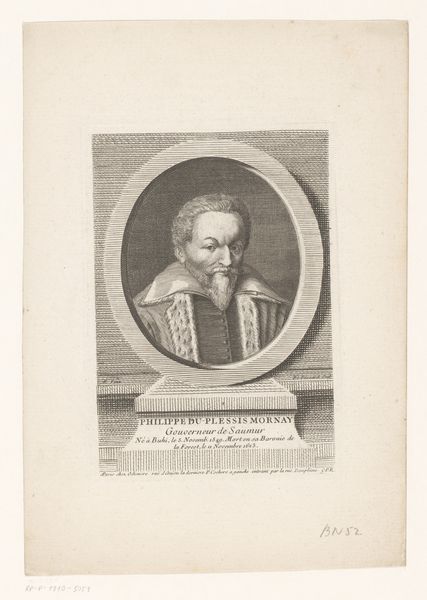
print, engraving
#
portrait
# print
#
old engraving style
#
15_18th-century
#
history-painting
#
engraving
#
realism
Dimensions: width 164 mm, width 114 mm
Copyright: Rijks Museum: Open Domain
Editor: This is "Portret van Floris II van Pallandt," made sometime between 1783 and 1795 by Reinier Vinkeles. It’s an engraving currently housed in the Rijksmuseum. It’s interesting; the main portrait is set above a few smaller rectangular vignettes, almost like a page from a book. How do you interpret this work? Curator: It is indeed structured like a historical document, which is quite intentional. Vinkeles wasn't simply depicting Floris; he was contributing to the construction of his historical image. Notice how the portrait is framed within a classical medallion. And below, rather than purely decorative elements, are symbols-- what seems to be an insignia and possibly instruments, maybe hinting at governance or family lineage. It served the function of public memory. Editor: So, it's about constructing a certain narrative? It's not just about likeness? Curator: Exactly. Printmaking at this time was deeply entwined with the politics of image production. Engravings like this were disseminated widely, shaping public perception of individuals and families. Consider how the clean, crisp lines lend an air of authority and timelessness. Who do you think this print was for? Who would be seeing this portrait? Editor: Well, based on where it's being exhibited, it would have been aimed at wealthy nobles to remind people of the lineage and perhaps be gifted among certain class levels. Curator: Precisely. And its function extends beyond just personal admiration. It actively participates in reinforcing power structures of the time. Think about the choices that went into what details to include, and even how Vinkeles positioned the subject. Everything is calculated to create a specific, lasting impression. Editor: That’s really interesting. So much more goes into a portrait than I initially thought. It's not just about capturing what someone looked like. It also immortalizes them and also promotes their place in society. Curator: Precisely! And thinking about the power and history involved shapes how we interpret these historical objects today.
Comments
No comments
Be the first to comment and join the conversation on the ultimate creative platform.
